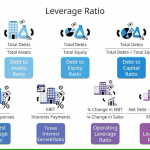The public markets have long captivated the attention of investors, with initial public offerings (IPOs) standing out as particularly alluring opportunities. The prospect of getting in on the ground floor of a promising company, coupled with the potential for outsized returns, has fueled a frenzy of excitement around these offerings. However, as with any investment, IPOs come with their fair share of risks and complexities that savvy investors must navigate carefully.
In this comprehensive guide, we’ll delve into the intricacies of the IPO landscape, exploring the motivations behind companies going public, the mechanics of the IPO process, and the strategies investors can employ to potentially capitalize on these transformative events. By the end of this article, you’ll have a deeper understanding of the opportunities and pitfalls associated with investing in IPOs, empowering you to make informed decisions that align with your investment goals and risk tolerance.
What is an IPO?
An IPO, or initial public offering, is the process by which a privately held company offers shares of its stock to the public for the first time. This allows the company to raise capital by selling ownership stakes to investors. In an IPO, the company works with underwriters, who help determine the offering price and facilitate the sale of shares to the public.

Benefits of going public through an IPO
Increased access to capital
One of the primary benefits of an IPO is the increased access to capital it provides. By going public, a company can sell shares to a wide range of investors, including institutional investors, retail investors, and even employees. This influx of capital can be used to fund expansion plans, invest in research and development, pay off debt, or pursue other growth opportunities.
Enhanced brand visibility and credibility
Going public can significantly enhance a company’s brand visibility and credibility. Publicly traded companies often receive more media coverage and attention from investors, analysts, and the general public. This increased exposure can help attract new customers, partners, and even potential acquirers. Being a public company can also provide the perception of stability and transparency, which can be appealing to stakeholders.
Liquidity for shareholders
Another advantage of an IPO is that it provides liquidity for shareholders. Before going public, the shares of a privately held company are typically illiquid, meaning there is no established market for them. By offering shares to the public, shareholders can sell their holdings on the open market, providing an opportunity to realize their investment and potentially make a profit. This liquidity can be particularly beneficial for early investors, employees with stock options, and founders looking to diversify their wealth.
Attracting top talent and incentivizing employees
Going public can also help attract top talent and incentivize employees. Public companies often have more resources and can offer competitive compensation packages, including stock options or restricted stock units. These equity-based incentives can align the interests of employees with the company’s long-term success and provide a tangible reward for their contributions. Additionally, being part of a publicly traded company can be seen as a mark of prestige, attracting talented individuals who want to be associated with a successful organization.
Drawbacks of going public through an IPO
Loss of control and increased regulatory requirements
One of the drawbacks of going public is the potential loss of control for the company’s founders and existing shareholders. With the sale of shares to the public, new investors come on board, and their interests may not align with the original vision of the company. Public companies are also subject to increased regulatory requirements, such as financial reporting, disclosure obligations, and compliance with securities laws. These additional responsibilities can be time-consuming and costly, diverting management’s attention from core business operations.
Increased scrutiny and pressure from shareholders
Going public means opening up the company to scrutiny from shareholders and the public. Shareholders have the right to voice their opinions and concerns, and they expect transparency and accountability from the company’s management. This can lead to increased pressure to meet quarterly financial expectations and deliver consistent growth, which may not always align with the company’s long-term strategic goals. The market’s reaction to quarterly results can also impact the company’s stock price, potentially causing volatility and affecting shareholder value.
Understanding the Fundamentals of IPOs
An IPO, or initial public offering, is a transformative event in a company’s lifecycle, marking the transition from a privately held entity to a publicly traded one. This process involves the company selling a portion of its shares to the general public for the first time, raising capital to fuel its growth and expansion.
The reasons behind a company’s decision to go public are manifold. Primarily, an IPO provides access to a broader pool of capital, allowing the business to fund its strategic initiatives, such as product development, market expansion, or acquisitions. Additionally, an IPO can offer founders and early investors an opportunity to monetize their stakes, providing a lucrative exit strategy. Furthermore, the increased visibility and prestige associated with a public listing can enhance a company’s brand recognition and credibility, potentially opening up new avenues for partnerships and collaborations.
While the benefits of an IPO are undeniable, the process also brings with it a host of challenges and responsibilities. Publicly traded companies must adhere to stringent regulatory requirements, including extensive financial reporting, disclosure obligations, and heightened scrutiny from investors, analysts, and regulators. This shift in the company’s structure and governance can be a significant adjustment for founders and management teams, who must balance short-term market expectations with their long-term strategic vision.
The IPO Process: A Step-by-Step Breakdown
The journey to a successful IPO is a meticulously orchestrated process, involving a multitude of stakeholders and a carefully choreographed sequence of events. Let’s explore the key steps in this transformative journey:
Preparation and Advisors
The first and perhaps most crucial step in the IPO process is to assemble a team of experienced advisors. Companies typically engage investment banks to serve as underwriters, guiding them through the entire IPO journey. These underwriters play a pivotal role in valuing the company, determining the optimal share price, and facilitating the distribution of shares to investors.
In addition to the investment bank, companies may also enlist the services of accountants, legal counsel, and public relations firms to ensure compliance with regulatory requirements, manage the due diligence process, and craft a compelling narrative for potential investors.
Due Diligence and Regulatory Compliance
Once the advisory team is in place, the company must undergo a rigorous due diligence process. This comprehensive investigation examines the company’s financials, operations, risks, and compliance with relevant regulations. The underwriters and regulatory authorities, such as the Securities and Exchange Commission (SEC) in the United States, scrutinize every aspect of the business to ensure the integrity of the offering and protect the interests of investors.
The IPO Prospectus
At the heart of the IPO process lies the prospectus, a detailed document that serves as the company’s “sales pitch” to potential investors. The prospectus outlines the company’s business model, financial performance, growth prospects, management team, and the risks associated with the investment. Crafting a compelling and informative prospectus is crucial, as it forms the basis for investor decision-making.
Pricing and Allocation
Determining the initial share price is a delicate balancing act, as the company and its underwriters seek to strike a balance between maximizing the capital raised and ensuring a successful debut on the public markets. This process, known as “bookbuilding,” involves gauging investor demand and assessing the appropriate valuation for the company’s shares.
Additionally, the company must decide on the allocation of shares, determining the proportion that will be made available to institutional investors, retail investors, and potentially reserved for employees or early investors.
Marketing and Roadshows
With the regulatory hurdles cleared and the share price set, the company and its underwriters embark on a marketing campaign to generate excitement and demand for the IPO. This typically involves investor roadshows, where the company’s management team presents the investment thesis and fields questions from potential investors.
The use of secure data rooms and other digital tools has become increasingly prevalent in this stage, allowing companies to efficiently and securely share information with prospective investors while closely monitoring their level of engagement.
Listing and Trading
Finally, the company completes the IPO process by officially listing its shares on a stock exchange, such as the New York Stock Exchange or Nasdaq. This marks the beginning of the company’s journey as a publicly traded entity, with its shares available for trading by investors.
However, the work doesn’t end there. As a public company, the organization must now navigate a new landscape of compliance, regulatory requirements, and heightened scrutiny from shareholders, analysts, and the media.
Evaluating IPO Opportunities
With the IPO process firmly established, the next critical step is to evaluate the merits of a particular offering. Investors must conduct thorough research and analysis to assess the company’s fundamentals, growth potential, and the broader market conditions.
Analyzing the Prospectus
The IPO prospectus is a treasure trove of information, providing a comprehensive overview of the company’s business, financials, and risk factors. Carefully reviewing the prospectus can reveal insights into the company’s competitive positioning, growth strategies, management team, and the industry dynamics.
Assessing Financial Performance
A deep dive into the company’s financial statements, including its revenue, profitability, cash flow, and balance sheet, can shed light on the company’s financial health and its ability to sustain growth. Investors should also pay close attention to any historical performance trends and the company’s projections for the future.
Evaluating the Competitive Landscape
Understanding the competitive environment in which the company operates is crucial. Analyzing the industry’s competitive dynamics, the company’s market share, and its ability to differentiate itself can help investors gauge the company’s long-term prospects.
Considering Valuation Metrics
Determining the appropriate valuation for an IPO can be a complex task, as the company’s shares have not yet been publicly traded. Investors can examine various valuation metrics, such as price-to-earnings (P/E) ratio, price-to-sales (P/S) ratio, and enterprise value-to-EBITDA (EV/EBITDA), to assess whether the offering is reasonably priced.
Monitoring Market Conditions
Broader market conditions can significantly influence the performance of an IPO. Investors should be mindful of factors such as economic cycles, investor sentiment, and industry-specific trends that may impact the company’s growth trajectory and the reception of its public debut.
Navigating the Risks and Challenges of IPOs
While the excitement and potential rewards of IPOs are undeniable, it’s essential to recognize the inherent risks and challenges that come with these investments. Savvy investors must approach IPOs with a clear understanding of these potential pitfalls and develop strategies to mitigate them.

Volatility and Unpredictability
IPO stocks can be highly volatile, particularly in the initial stages of trading. The share price may experience significant fluctuations, driven by a range of factors, including investor sentiment, market conditions, and the company’s ability to meet expectations.
Lack of Performance Track Record
Unlike established public companies, newly listed firms often lack a proven track record of financial performance and operational stability. Investors must rely on the information provided in the IPO prospectus, which may not fully capture the company’s long-term potential or the risks it faces.
Insider Selling and Lock-up Periods
After the IPO, company insiders, such as founders, executives, and early investors, are typically subject to a lock-up period during which they are restricted from selling their shares. The expiration of this lock-up period can lead to a surge in share supply, potentially exerting downward pressure on the stock price.
Regulatory and Compliance Challenges
The transition to a public company brings with it a host of regulatory and compliance requirements, including financial reporting, corporate governance, and disclosure obligations. Navigating this new landscape can be a significant challenge for management teams, potentially distracting them from their core business operations.
Balancing Short-term and Long-term Priorities
Public companies often face the pressure of meeting quarterly earnings expectations and satisfying the demands of short-term-oriented investors. This can create tension between the company’s long-term strategic vision and the need to deliver immediate results, potentially compromising the organization’s long-term growth and sustainability.
Strategies for Investing in IPOs
Given the unique characteristics and potential pitfalls of IPOs, investors must approach these opportunities with a well-crafted investment strategy. Here are some approaches to consider:
Participating in the IPO Offering
For investors with access to the primary market, participating in the IPO at the offering price can be an attractive option. This allows investors to potentially capitalize on the initial surge in share price, though it’s important to be mindful of the risks and the limited availability of IPO shares.
Waiting for Post-IPO Price Stabilization
Some investors prefer to adopt a more cautious approach, waiting for the initial volatility to subside before considering an investment in the newly public company. This strategy allows them to assess the company’s performance and the market’s reaction before committing capital.
Investing in IPO-Focused Funds
Investors who lack the resources or expertise to evaluate individual IPOs may consider investing in mutual funds or exchange-traded funds (ETFs) that specialize in IPO investments. These funds provide diversified exposure to a basket of newly public companies, potentially mitigating some of the risks associated with individual IPO investments.
Focusing on Long-term Fundamentals
Ultimately, the most successful IPO investors are those who prioritize the company’s long-term growth potential and fundamental strength over short-term market fluctuations. By conducting thorough research, understanding the company’s business model, and assessing its competitive positioning, investors can make informed decisions that align with their investment objectives and risk tolerance.
Navigating the Evolving IPO Landscape
The IPO market is a constantly evolving landscape, with new trends and alternative approaches emerging alongside the traditional IPO process. It’s essential for investors to stay informed about these developments to identify opportunities and mitigate risks.
Direct Listings and SPACs
In recent years, alternative paths to going public have gained traction, such as direct listings and special purpose acquisition companies (SPACs). These approaches offer distinct advantages and considerations that investors must understand to make informed decisions.
The Impact of Market Conditions
Broader economic and market conditions can significantly influence the IPO landscape. Periods of economic uncertainty or market volatility may lead to a slowdown in IPO activity, as companies and investors become more cautious. Conversely, favorable market conditions can spur a surge in IPO offerings, potentially creating both opportunities and challenges for investors.
The Role of Technology and Innovation
The rapid pace of technological advancement and innovation has had a profound impact on the IPO market. Companies operating in disruptive industries, such as e-commerce, fintech, and biotechnology, have increasingly turned to the public markets to fuel their growth, presenting both exciting prospects and heightened risks for investors.
Conclusion: Embracing the IPO Opportunity with Prudence
The world of IPOs is a captivating and complex one, offering both tremendous potential and significant risks. By understanding the fundamentals of the IPO process, evaluating investment opportunities with a critical eye, and navigating the inherent challenges, investors can position themselves to capitalize on the growth and success of newly public companies.
However, it’s crucial to approach IPO investments with a prudent and disciplined mindset. Thorough research, a long-term perspective, and a willingness to exercise caution in the face of market hype and volatility are essential ingredients for success in this dynamic arena.
As you embark on your IPO investment journey, remember to seek the guidance of experienced financial advisors, stay informed about industry trends, and never lose sight of your investment goals and risk tolerance. With a balanced approach and a commitment to diligent analysis, you can navigate the exhilarating world of IPOs and potentially reap the rewards of backing the next generation of market leaders.






